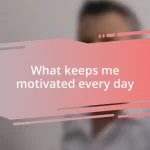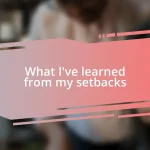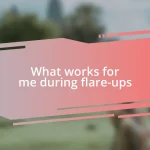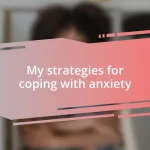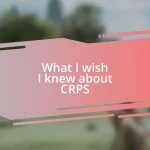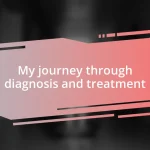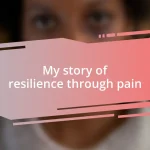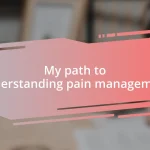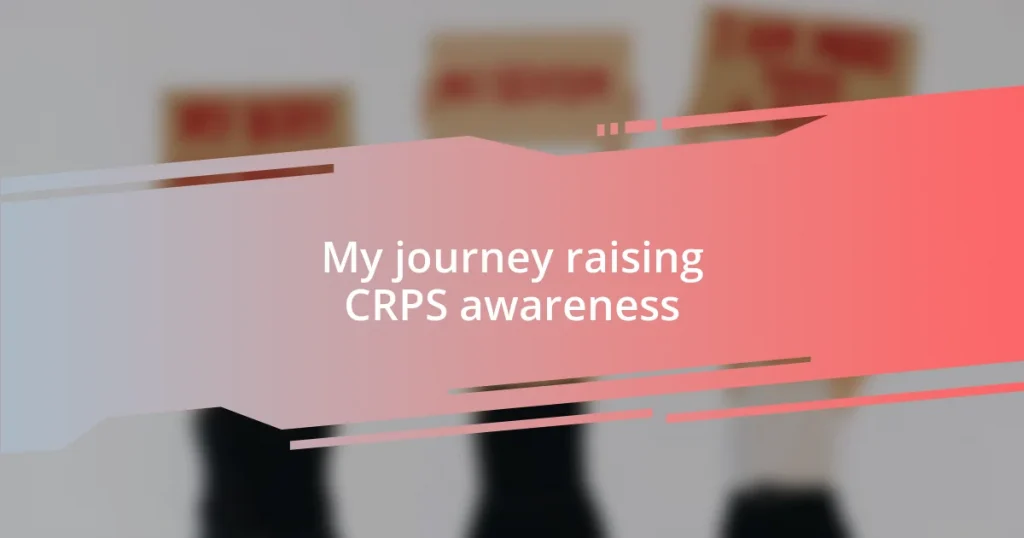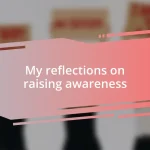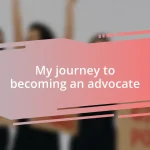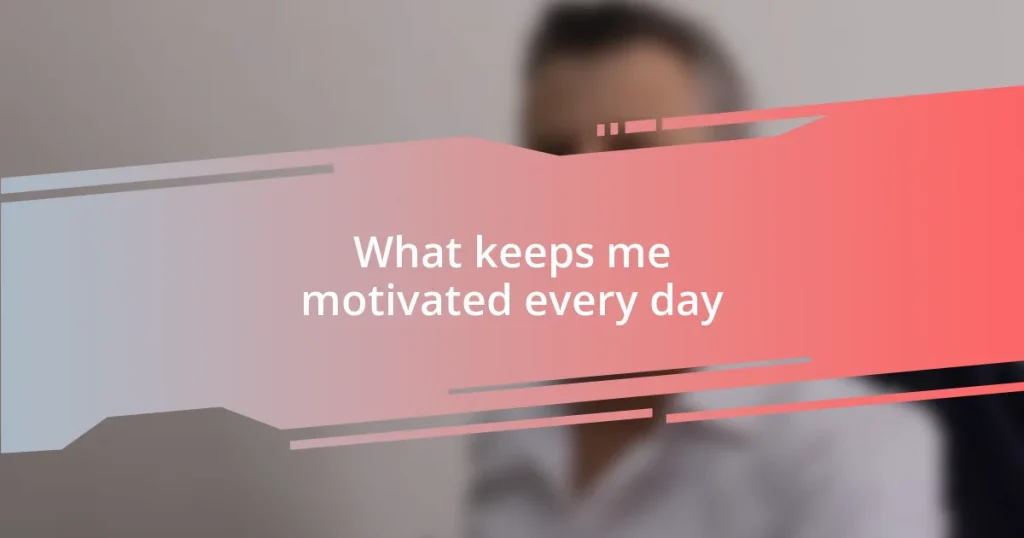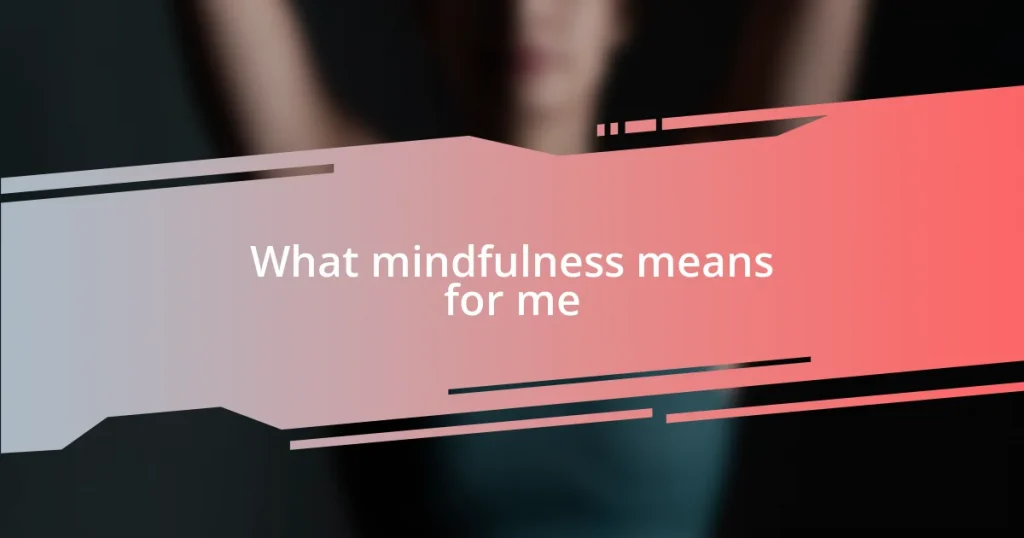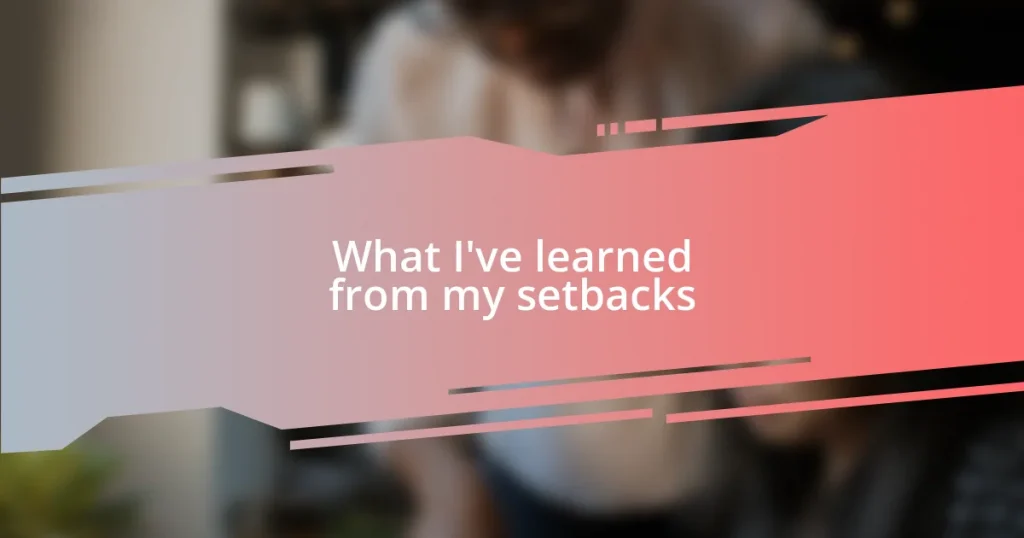Key takeaways:
- Complex Regional Pain Syndrome (CRPS) significantly impacts both physical and emotional well-being, making recognition and understanding critical for those affected.
- Developing a supportive community and sharing experiences with others who understand CRPS can provide empowerment and alleviate feelings of isolation.
- Raising awareness through campaigns, social media, and local events can foster greater understanding of CRPS, mobilizing support and resources for those living with the condition.
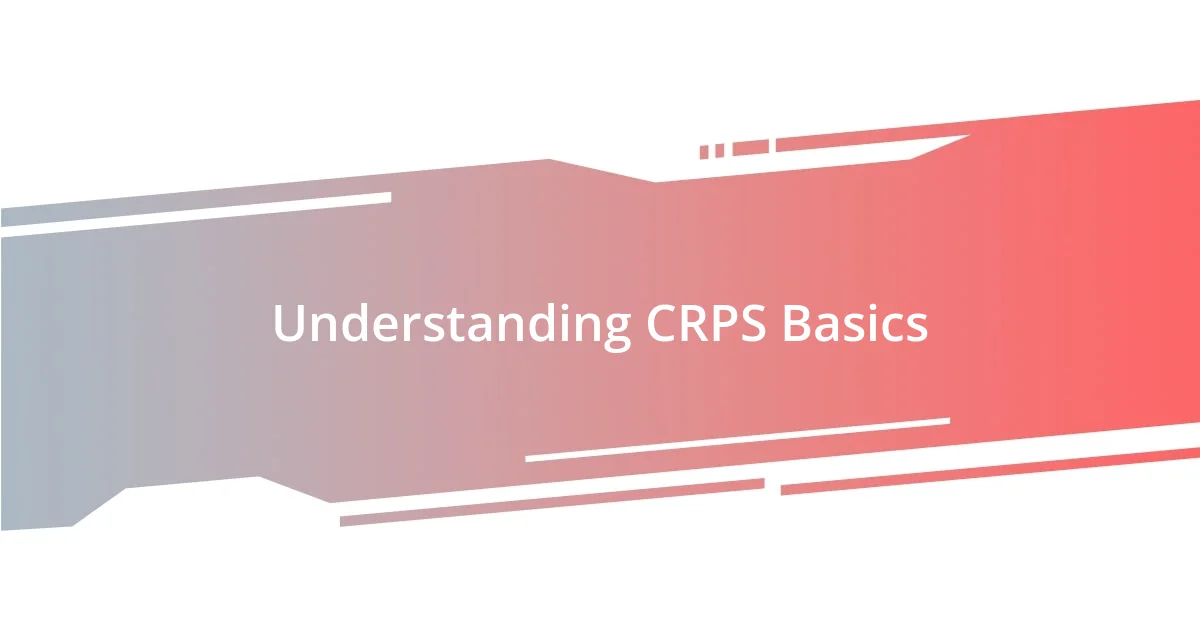
Understanding CRPS Basics
Complex Regional Pain Syndrome (CRPS) is a chronic pain condition that typically affects a limb after an injury, though its exact cause remains a bit of a mystery. I remember when I first learned about CRPS; the way it can change someone’s life is truly staggering. Imagine experiencing pain that is far greater than what one would expect from the original injury—it’s not just physical, it dives deep into your emotional well-being.
The symptoms of CRPS can include severe pain, swelling, and changes in skin color and temperature. I often wondered, how can an injury lead to such widespread impact? For many, the emotional toll is just as significant as the physical. The anxiety and frustration of not being believed or understood can weigh heavily on both the patient and their loved ones. It’s essential to recognize not only the physical aspects of CRPS but its impact on mental health as well.
In my experience, treatment can be extremely varied, ranging from medication to physical therapy, and there’s no one-size-fits-all solution. Have you ever felt lost in your own body due to ongoing pain? The journey of finding effective treatment is often long and winding, pushing many to explore holistic approaches as they seek relief. It’s a battle against not just the pain, but the emotional rollercoaster that accompanies it.
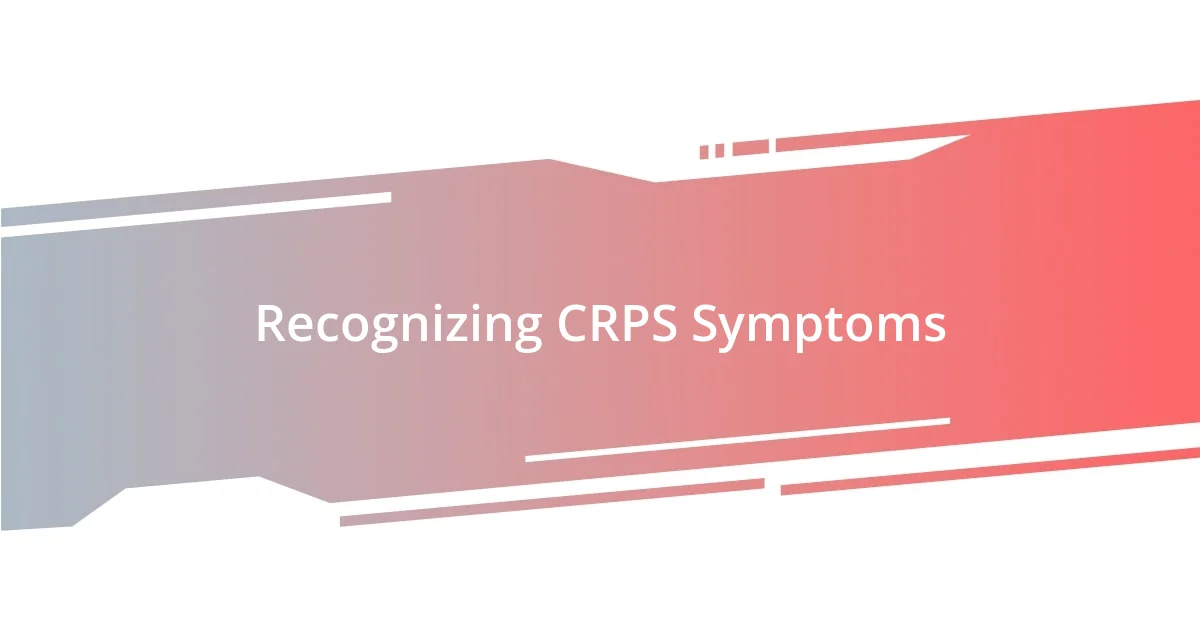
Recognizing CRPS Symptoms
Recognizing the symptoms of CRPS can be a daunting task, especially since they often mimic or overlap with other conditions. In my journey, I encountered various symptoms that came in waves, making it challenging to pinpoint exactly what was happening. It felt like I was playing a puzzling game of charades with my body. Here are some key symptoms to look out for:
- Intense, burning pain or an aching sensation in the affected limb
- Sensitivity to touch or temp changes, where even a light breeze could be unbearable
- Swelling and redness that might fluctuate day by day
- Abnormal sweating or changes in hair and nail growth
- Limited mobility or stiffness in the affected area
Each of these symptoms tells a part of the story, but the shared experience can feel isolating. For instance, during my most difficult days, I would sometimes wear a long sleeve shirt not just to hide the discoloration from others but to shield myself from the stares and unsolicited questions. Watching the confusion in their eyes as I described my symptoms often made me feel invisible. It’s incredible how a condition can create such distance between you and the outside world, reinforcing the importance of recognition and understanding in the face of something so complex.
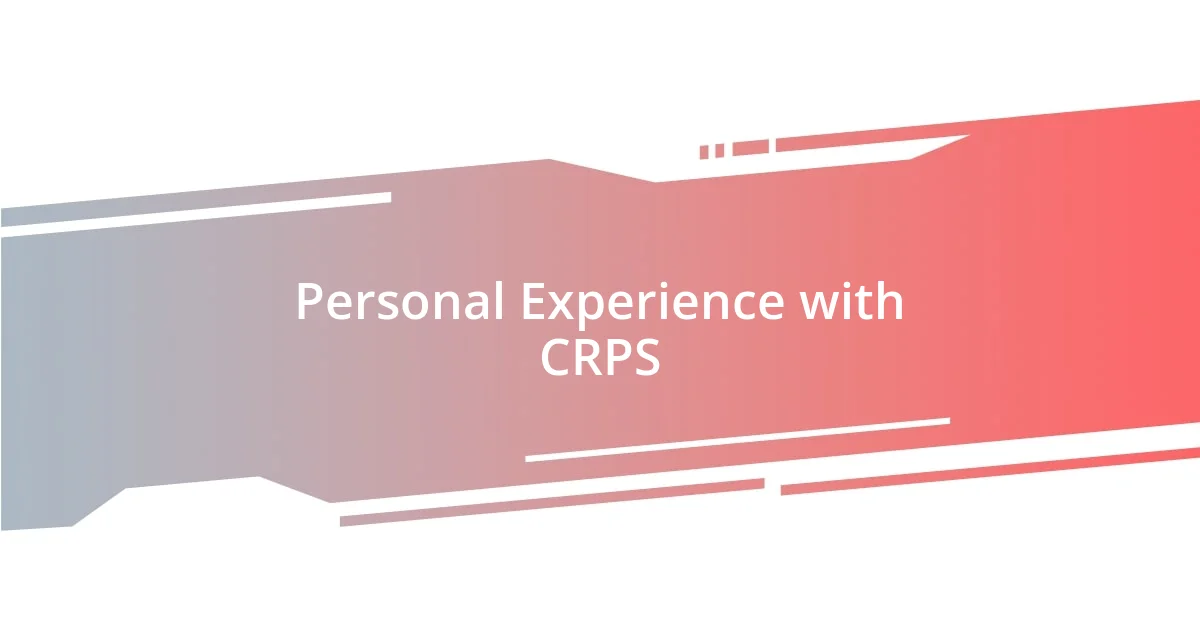
Personal Experience with CRPS
Navigating life with CRPS is like walking a tightrope every day. I distinctly remember a sunny afternoon when I decided to join friends for a picnic. What should have been a delightful outing quickly turned into a battle with my own body. As I sat on the blanket, every light touch from the grass felt like a thousand needles—the pain was overwhelming. It was heartbreaking to see everyone enjoying themselves while I felt trapped in my own personal torment.
Days like that taught me the resilience of the spirit. I often think about the times I had to cancel plans last minute because the pain was too severe or because I couldn’t bear the thought of explaining once again why I couldn’t enjoy a simple stroll in the park. Those moments can create isolation, not just physically but emotionally. I’ve learned to embrace my journey, seeking joy in the little things, like savoring a good book or finding a quiet moment in nature, despite the chaos that CRPS brings.
What has struck me most about my experience with CRPS is how unpredictable it can be. One moment, I could be engrossed in a project at work, feeling almost normal, and the next, I’d be gripped by excruciating pain that rendered me unable to function. I remember a particularly frustrating week when a sudden flare-up came just before an important presentation. It felt like I was battling not just the pain but the expectations of those around me.
| Activity | Impact of CRPS |
|---|---|
| Social Outings | Difficulty participating due to pain or anxiety |
| Work Projects | Unpredictable flare-ups impacting productivity |
| Daily Tasks | Challenging to manage even simple chores |
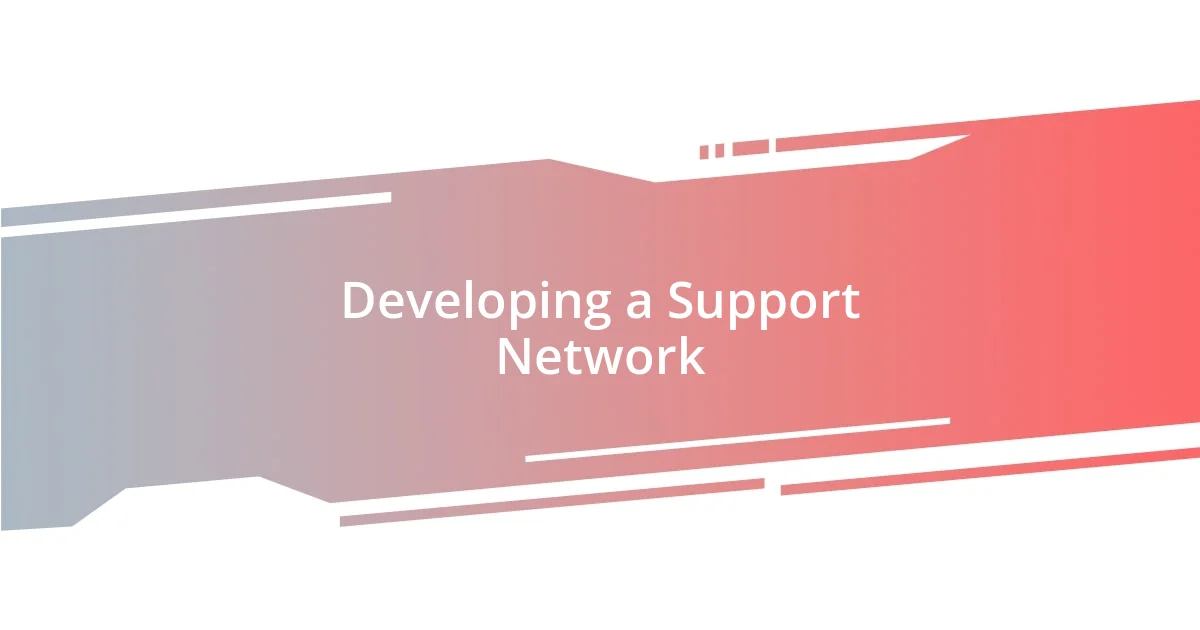
Developing a Support Network
Developing a support network has been a game changer in my journey with CRPS. I remember the first time I connected with others who were experiencing similar struggles. It felt like finding a hidden treasure; suddenly, I wasn’t alone in this fight. Talking with someone who truly understood my pain was empowering. Have you ever felt that relief when you finally share your story with someone who listens without judgment?
Joining online forums and local support groups opened doors I never anticipated. One evening, during a video call with fellow warriors, I shared about my fear of being a burden to my friends and family. To my surprise, many felt the same way. That shared vulnerability fostered deep bonds and created a safe space for us to vent, share coping strategies, and celebrate our small victories. It reinforced the idea that it’s okay to seek help—after all, we’re stronger together.
As I continue to build my network, I actively seek out professionals in the medical community who are knowledgeable about CRPS. One doctor I met was genuinely interested in helping me navigate this condition. Having a compassionate healthcare professional bolster my support network has made me more confident in managing my CRPS journey. It’s refreshing to have people around me who understand and support my needs, reminding me that I’m not just battling this alone.
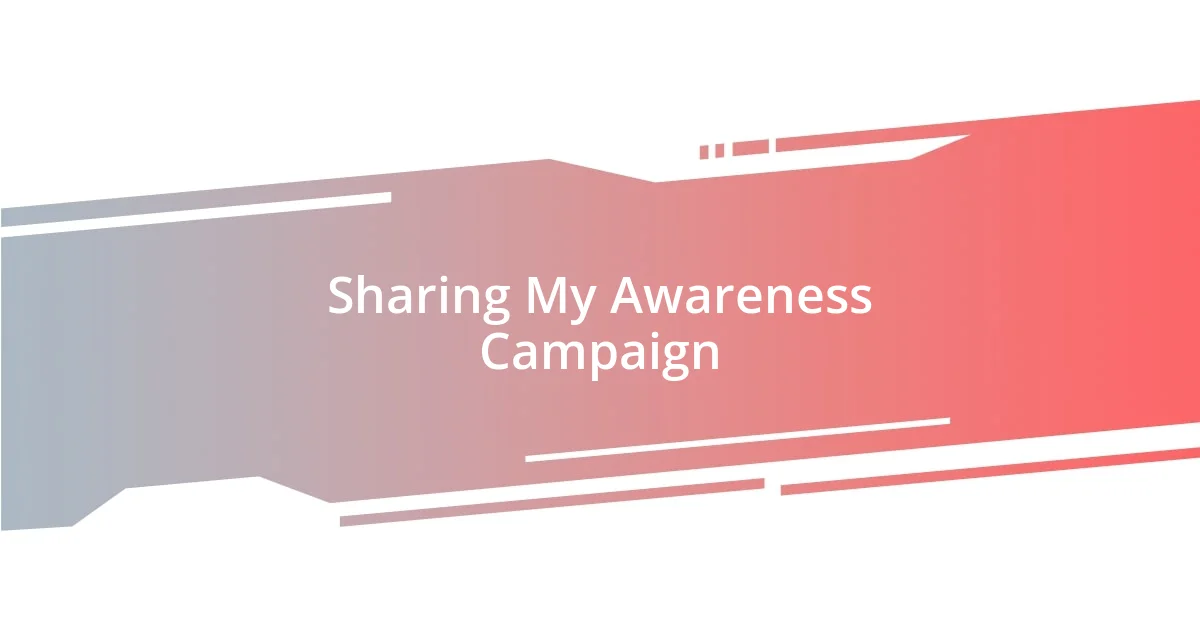
Sharing My Awareness Campaign
I poured my heart into my awareness campaign, determined to shed light on CRPS. I vividly remember setting up an event at a local community center, complete with informational booths and guest speakers who shared their experiences. It was a whirlwind of emotions—excitement mixed with anxiety. How would people respond? Much to my relief, I watched as attendees engaged in heartfelt conversations, asking questions and sharing their stories. It felt like I was planting seeds of understanding in a fertile ground.
Social media became another powerful tool in my campaign. I crafted posts that shared poignant moments from my daily life with CRPS, and, to my astonishment, the response was overwhelming. Each like and share felt like a small victory. I often ponder, what if my simple story could resonate with just one person? This thought motivated me to keep sharing my journey—even when it felt daunting. The connections formed through those posts were inspiring; people reached out to say they felt seen and understood for the first time.
I can’t forget the day I orchestrated a virtual talk, inviting experts to discuss CRPS intricacies. I was nervous, worrying if I could articulate my thoughts clearly. But afterward, attendees flooded the chat with gratitude and insights, sharing their own experiences and methods of coping. It was a reminder that while I may be battling CRPS alone in my own body, this campaign has created a bridge—a way for us to connect, learn, and stand stronger together in the face of pain.
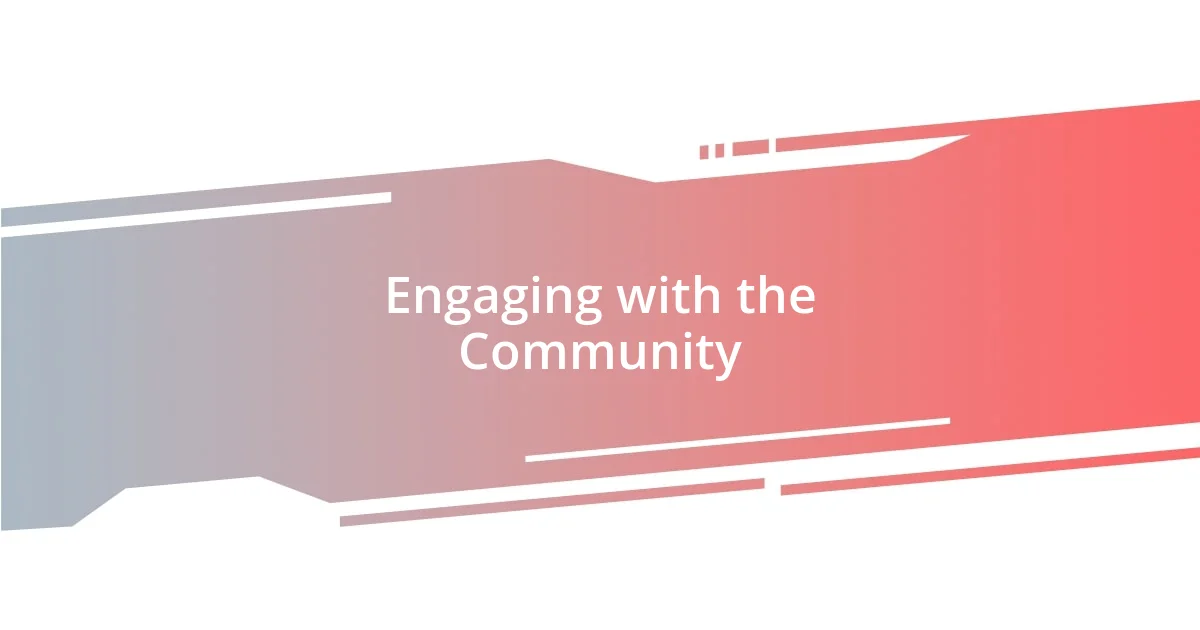
Engaging with the Community
Engaging with the community has been pivotal in my efforts to raise CRPS awareness. I recall attending a local health fair where I set up a booth, nervously awaiting my first visitors. When a young woman approached me and shared her own CRPS story, I realized how powerful these personal exchanges can be. Isn’t it incredible how a simple conversation can spark understanding and awareness?
Throughout my journey, I’ve also explored collaboration with local businesses. One memorable partnership involved a local café hosting a “CRPS Awareness Month” event, where a portion of the proceeds went to support research initiatives. Watching community members come together for a cause was deeply moving. It made me wonder—how often do we stop and think about the impact our collective efforts can have on those facing invisible illnesses?
Moreover, I’ve witnessed the transformation that happens when individuals unite for a common purpose. I remember organizing a walk to raise awareness and funds for CRPS research. As we gathered, the energy was palpable; it felt as if every step we took echoed the resilience we shared. Each face in the crowd told a story, and together we created a vibrant tapestry of support and understanding. Isn’t it empowering to realize that by engaging with the community, we’re not just raising awareness—we’re building a movement?
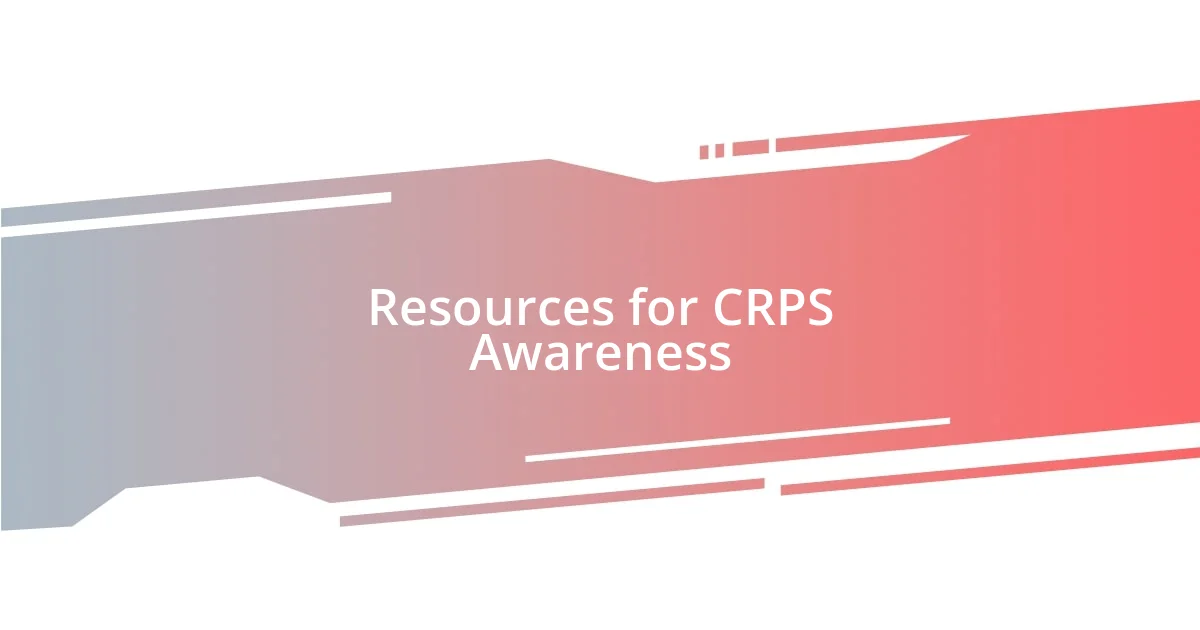
Resources for CRPS Awareness
When I began my journey, I sought out resources that could amplify my message and connect me with others fighting CRPS. I discovered online platforms like the CRPS Awareness Network, which offers a wealth of information, including support groups and educational materials. I remember the hope I felt when I found a community where people shared their stories—some of their struggles mirrored my own. Can you imagine the comfort in knowing you’re not alone?
One of the standout resources I came across was ChronicPainAustralia.org. Their commitment to educating the public about invisible illnesses resonated with me deeply. I can still picture the relief I felt as I read their articles that not only explained CRPS but also provided actionable steps for those wanting to help. It drove home the importance of empathy in our daily interactions. Wouldn’t it be wonderful if every person understood the complexities of conditions like CRPS?
I also leaned on social media channels to spread awareness—specifically, using hashtags like #CRPSAwareness that helped my posts reach a broader audience. I vividly recall receiving a heartfelt message from a stranger who found my campaign online and felt empowered to share her own CRPS story. That experience taught me how interconnected we all are, and each post became a thread weaving a stronger community. How powerful is it to think that sharing our stories can ignite change?
